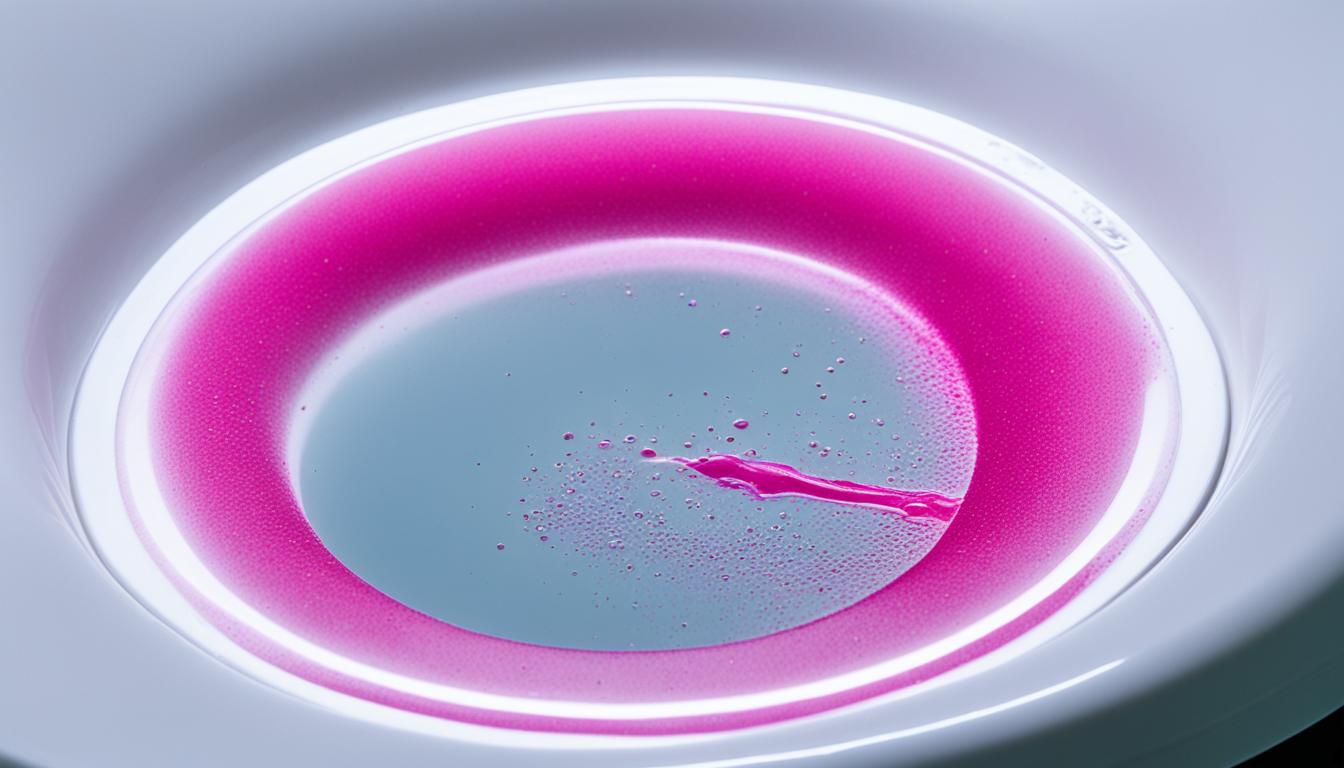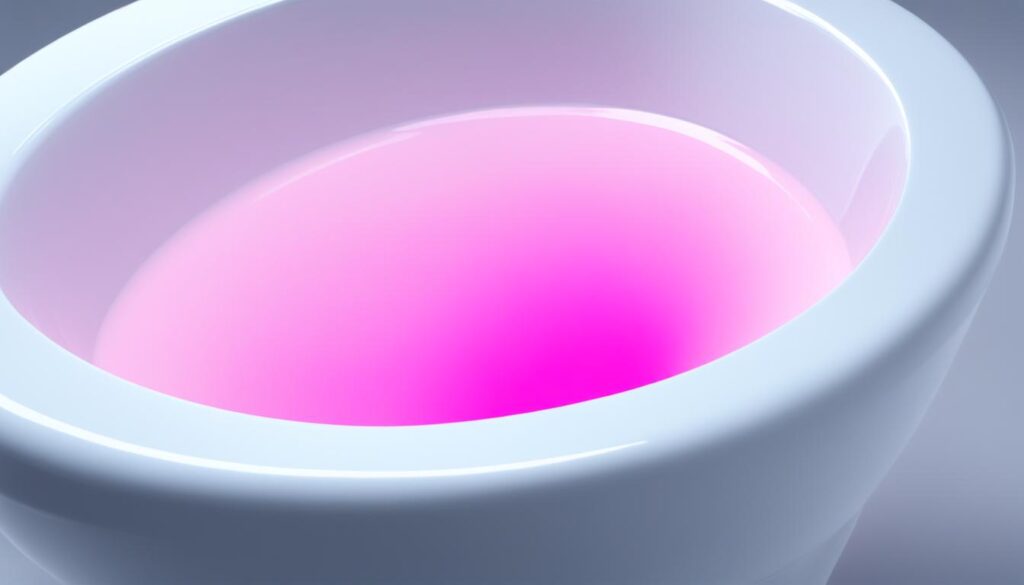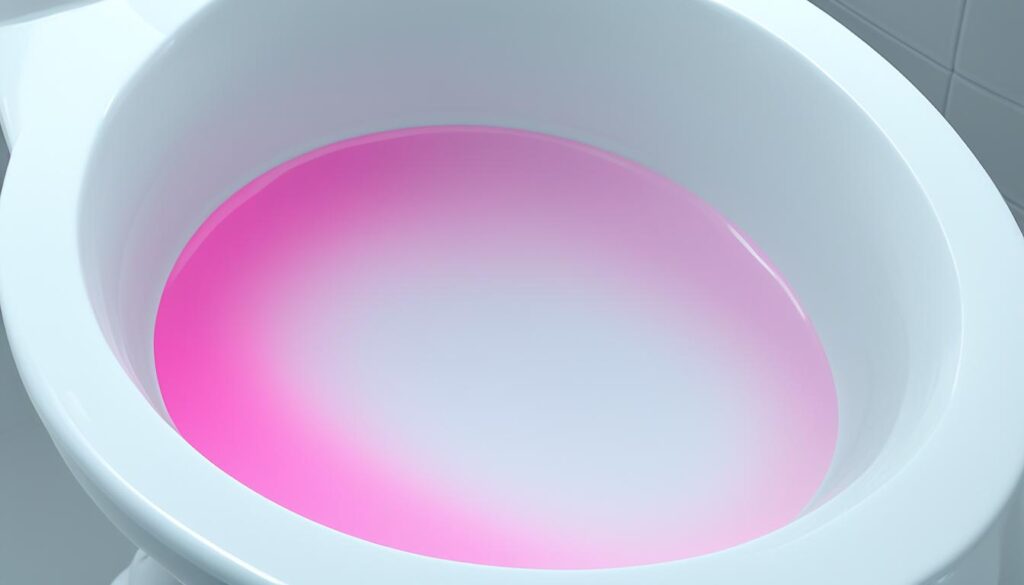
Causes of Pink Toilet Rings Explained
Pink toilet rings can be a frustrating and unsightly problem in bathrooms. You may have noticed a pink ring in your toilet bowl or pink residue in the water. But what causes these discolorations? Understanding the underlying causes is the first step towards eliminating this issue and maintaining a clean and hygienic bathroom environment.
In this article, we will explore the various factors that contribute to the formation of pink toilet rings. From bacterial growth to chemical reactions and water quality, we will uncover the reasons behind this common bathroom concern.
Key Takeaways:
- Pink toilet rings can be caused by bacterial growth, chemical reactions, and water quality issues.
- Serratia marcescens is a type of bacteria that can result in pink stains in toilets.
- Preventing bacterial growth and maintaining clean toilet bowls require proper cleaning techniques and good water quality.
- Chemical reactions between minerals in water and chlorine can lead to toilet discoloration.
- Regular cleaning and maintenance, along with addressing water quality issues, can help prevent and remove pink toilet rings.
Understanding Bacterial Growth
In this section, we will delve into the role of bacteria in the discoloration of toilet bowls. Specifically, we will focus on a specific type of bacteria called Serratia marcescens, which is notorious for causing pink stains in toilet water. By understanding the conditions that facilitate bacterial growth, you can take proactive measures to prevent these unsightly stains in your toilet.
One of the primary reasons for bacterial growth in toilets is poor hygiene practices. Bacteria thrive in moist and warm environments, making toilets an ideal breeding ground. To avoid pink stains caused by bacterial growth, it is essential to adhere to proper toilet cleaning routines. Regularly cleaning and disinfecting your toilet bowl can significantly reduce the presence of bacteria and prevent the formation of pink stains.
Here are a few toilet cleaning tips to help you maintain a bacteria-free toilet:
- Use a toilet brush and cleaner to scrub and disinfect the inside of the bowl regularly.
- Pay extra attention to the rim and under the toilet seat, as these areas are often overlooked but can harbor bacteria.
- Flush the toilet with the lid closed to prevent bacteria from being dispersed in the air.
- Consider using antibacterial cleaning products specifically designed for toilets.
Despite following proper cleaning practices, sometimes pink stains may still appear in your toilet. If this happens, don’t worry. There are effective cleaning methods to remove pink stains and restore your toilet’s pristine condition.
When faced with pink stains, you can try the following methods:
- Mix equal parts of water and white vinegar in a spray bottle. Apply the solution to the affected areas and let it sit for a few minutes. Scrub the stains with a toilet brush, and then flush the toilet.
- Alternatively, you can use a cleaning product containing hydrogen peroxide. Follow the instructions on the product label for best results.
Remember, consistency is key when it comes to maintaining a clean and bacteria-free toilet. By practicing regular cleaning and implementing these effective tips, you can keep your toilet bowl free from pink stains caused by bacterial growth.

| Summary of Toilet Cleaning Tips | |
|---|---|
| 1 | Regularly clean and disinfect your toilet bowl using a toilet brush and cleaner. |
| 2 | Pay special attention to the rim and under the toilet seat, as these areas can harbor bacteria. |
| 3 | Flush the toilet with the lid closed to prevent the dispersion of bacteria. |
| 4 | Consider utilizing antibacterial cleaning products specifically formulated for toilets. |
| 5 | If pink stains appear, use a mixture of water and white vinegar or a cleaning product containing hydrogen peroxide to remove them. |
Chemical Reactions and Water Quality
In addition to bacterial growth, the development of pink toilet rings can also be influenced by chemical reactions and the quality of water in your toilet bowl. Understanding these factors is crucial for effectively preventing and tackling toilet stains.
When certain minerals, such as iron and manganese, are present in the water supply, they can react with the chlorine used for disinfection, resulting in discoloration. This chemical reaction can lead to the formation of pink stains in your toilet bowl.
To combat this issue, it is important to ensure that the water quality in your toilet is well-maintained. Here are some tips to help you maintain clean and clear toilet bowls:
- Regular cleaning: Stay on top of your toilet cleaning routine to prevent the buildup of minerals and bacteria that can lead to discoloration. Use a toilet cleaner specifically designed to tackle stains and follow the instructions on the product for best results.
- Water softeners: If you have hard water in your area, consider installing a water softener to reduce mineral content. This can help minimize the risk of chemical reactions and the formation of pink stains in your toilet.
- Flush with clean water: After using any cleaning products in your toilet, make sure to flush it thoroughly with clean water. This will help remove any remaining residue and prevent further discoloration.
By implementing these toilet cleaning tips and paying attention to the quality of water in your toilet, you can significantly reduce the chances of pink toilet rings and maintain a fresh, hygienic bathroom environment.

Conclusion
In conclusion, understanding the causes and solutions for pink toilet rings is essential for maintaining a clean and hygienic bathroom environment. The discoloration of toilet bowls can be attributed to various factors, including bacterial growth and chemical reactions.
Bacterial growth, particularly the presence of Serratia marcescens, can lead to pink stains in toilet bowls. It is crucial to maintain proper sanitation practices and regularly clean toilets to prevent bacterial growth. This includes using disinfectants specifically designed to eliminate bacteria and following proper cleaning techniques.
Additionally, chemical reactions between water minerals, such as iron and manganese, and chlorine can also result in pink residue in toilets. To address this issue, it is important to consider the quality of water supply and implement appropriate water treatment methods if necessary. Regular cleaning and maintenance using suitable cleaning products can help prevent the formation of pink toilet rings.
By following these toilet cleaning tips and understanding the underlying causes, individuals can effectively prevent and remove pink stains in their toilet bowls. Regular cleaning, proper sanitation practices, and awareness of water quality can contribute to a clean and fresh bathroom environment, free from toilet discoloration.




